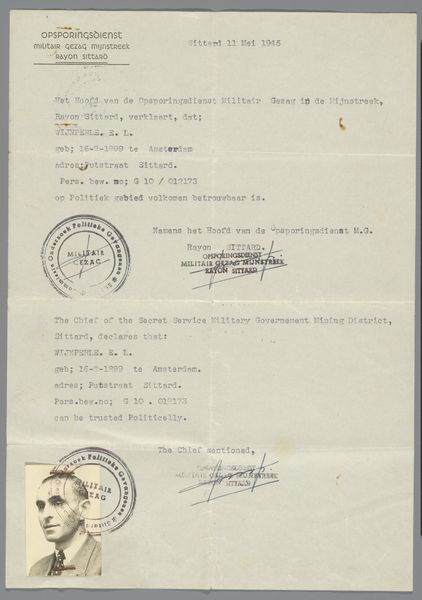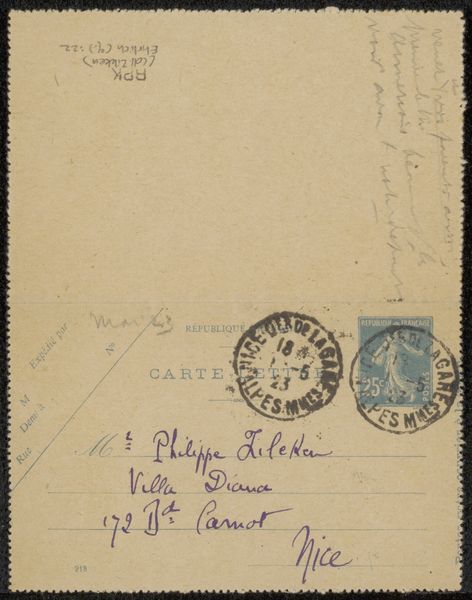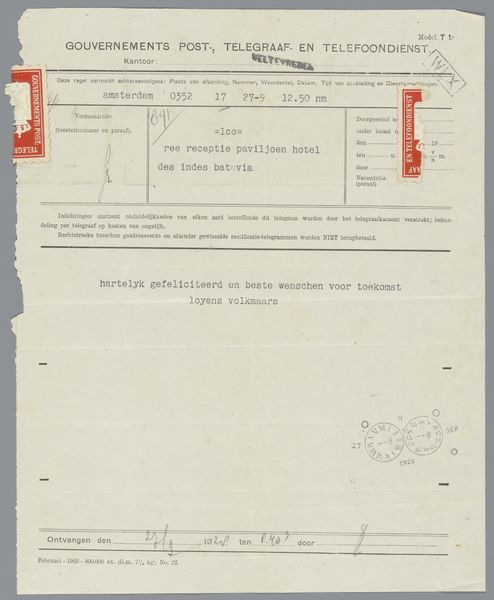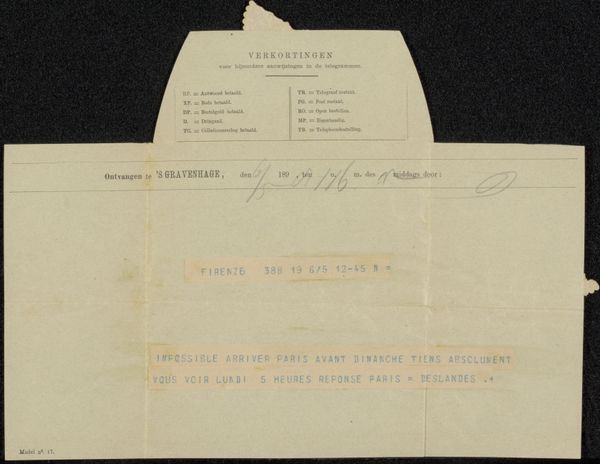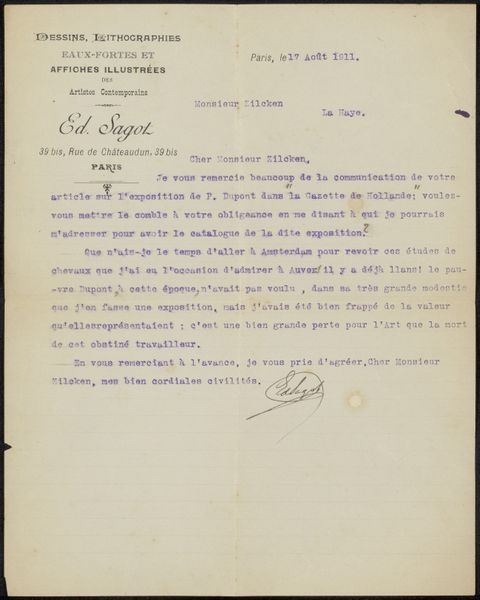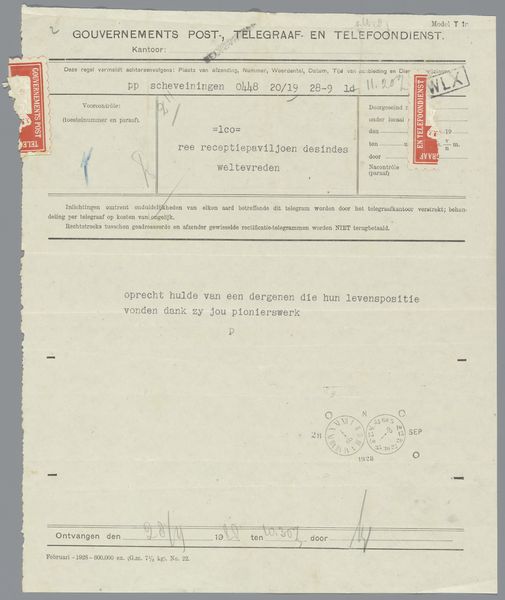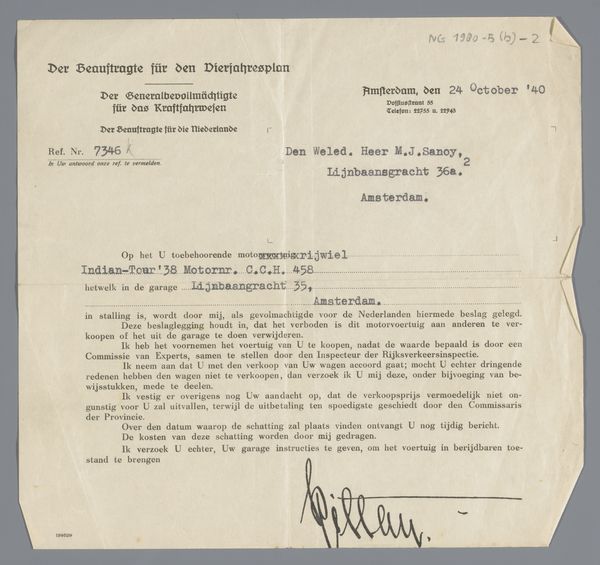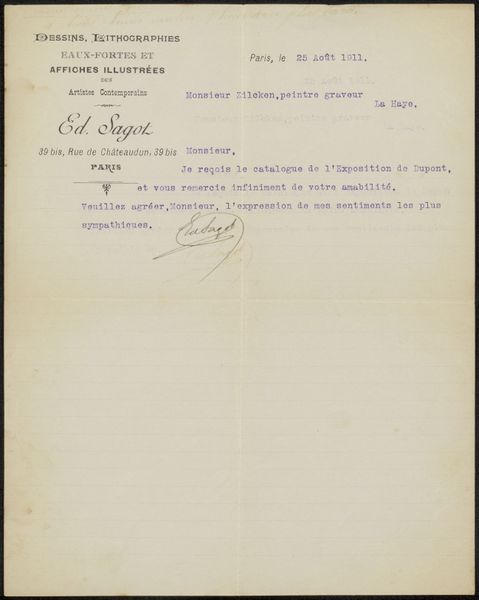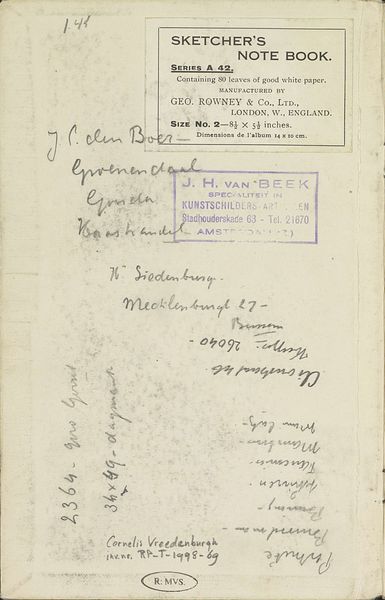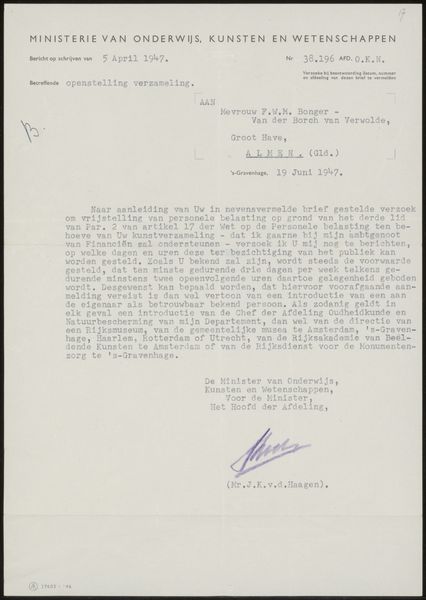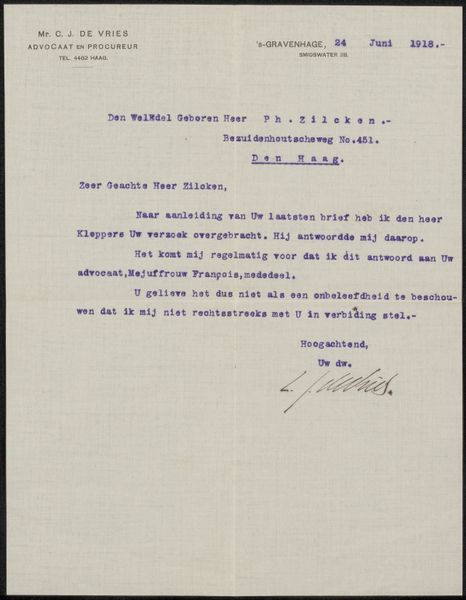
mixed-media, collage, paper, ink
#
mixed-media
#
collage
#
paper
#
ink
Dimensions: length 27.5 cm, width 18 cm
Copyright: Rijks Museum: Open Domain
Curator: H. van Tuyll's "Movement Order," likely dating from 1945 to 1948, uses a mixed media approach combining collage, paper, and ink. Editor: It feels surprisingly fragile, doesn't it? The delicate paper, the fading ink… It speaks to the precariousness of that moment in history. Curator: Indeed. This document, seemingly a standard military order, authorizing Lieutenant T. Van Renterghem to travel to London, offers insight into the post-war social and political landscape. The context is everything here, the order hinting at a specific need, for diplomatic ties. Editor: Look at the "Air Traffic Office, The Hague" stamp; those material elements immediately ground it in a very real place and time. This isn’t some abstract historical representation. We have Van Tuyll's signature, too, in what I would imagine as a mass produced military document. All of this helps tell a story about labor and resources during this historical period. Curator: Precisely. Notice the weight of "Commander Netherlands Forces" versus "Air Traffic Office". Power relationships between bureaucratic arms of the same structure are all communicated, here. And what are we to read into that bold authorization, signed by Captain Baron van Tuyll, specifically permitting the lieutenant to carry confidential documents? Editor: It's fascinating to consider how something meant to be so functional—a simple order—can now serve as a historical artifact, revealing so much about the practicalities of managing operations during a complex time in European history. This work is both utilitarian and precious in a historical sense. Curator: And for me, it suggests deeper conversations. What secrets traveled with Lieutenant Van Renterghem? What decisions were made based on the documents he carried? Its incompleteness fuels our questioning. Editor: Agreed, and the ephemerality of the materials really enhances the emotional resonance. Knowing it exists, after so many decades is a testament to careful keeping, as it might be just a standard order without a personal stake in preserving this object. Curator: Absolutely. Van Tuyll's work becomes a portal. It connects us to the individuals involved and, perhaps, forces us to reflect on the ethical dimensions of wartime directives. Editor: For me, I am captivated by how seemingly unremarkable things are deeply impacted by history. "Movement Order" provides access to a world where a simple travel order can tell stories of international relationships during fragile circumstances.
Comments
No comments
Be the first to comment and join the conversation on the ultimate creative platform.
